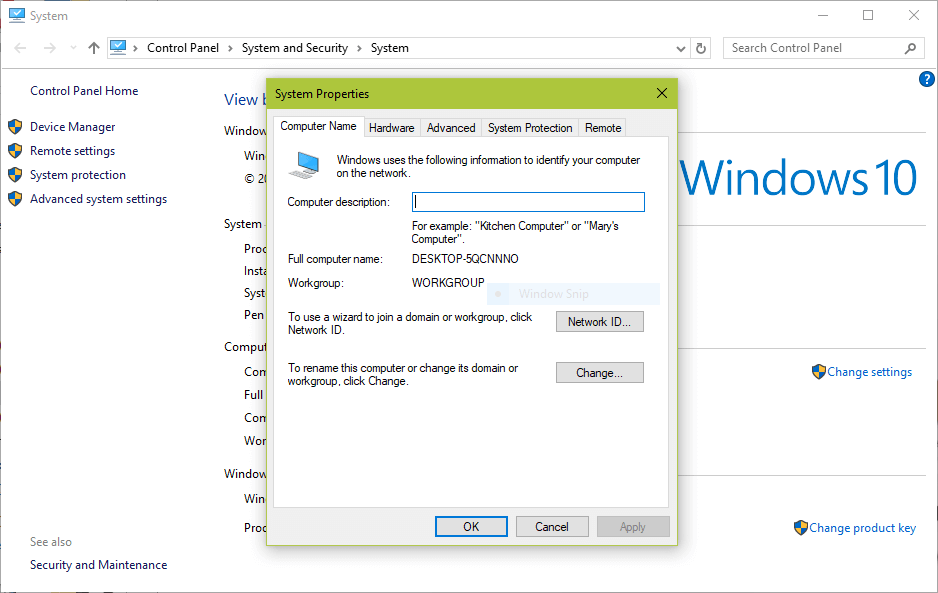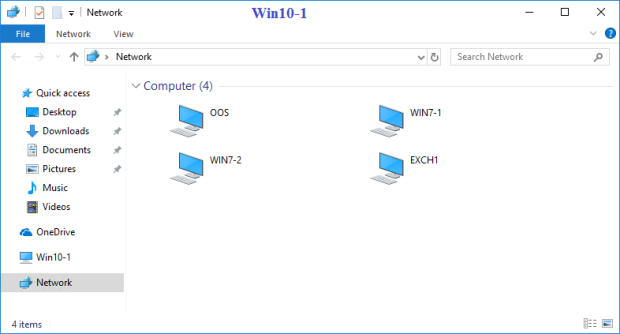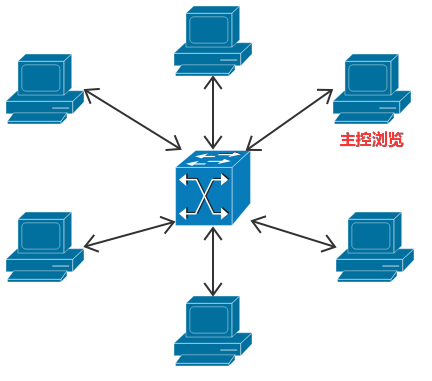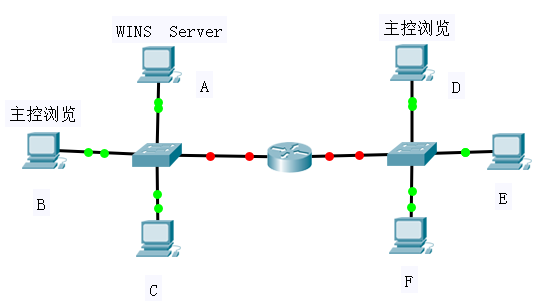Samba服务——/etc/samba/smb.conf.example
前言
samba为我们提供了一个案例配置文件,通过学习这个配置文件可以知晓samba服务常用配置选项。

# This is the main Samba configuration file. For detailed information about the # options listed here, refer to the smb.conf(5) manual page. Samba has a huge # number of configurable options, most of which are not shown in this example. # # The Samba Wiki contains a lot of step-by-step guides installing, configuring, # and using Samba: # https://wiki.samba.org/index.php/User_Documentation # # In this file, lines starting with a semicolon (;) or a hash (#) are # comments and are ignored. This file uses hashes to denote commentary and # semicolons for parts of the file you may wish to configure. # # NOTE: Run the "testparm" command after modifying this file to check for basic # syntax errors. # #--------------- # Security-Enhanced Linux (SELinux) Notes: # # Turn the samba_domain_controller Boolean on to allow a Samba PDC to use the # useradd and groupadd family of binaries. Run the following command as the # root user to turn this Boolean on: # setsebool -P samba_domain_controller on # # Turn the samba_enable_home_dirs Boolean on if you want to share home # directories via Samba. Run the following command as the root user to turn this # Boolean on: # setsebool -P samba_enable_home_dirs on # # If you create a new directory, such as a new top-level directory, label it # with samba_share_t so that SELinux allows Samba to read and write to it. Do # not label system directories, such as /etc/ and /home/, with samba_share_t, as # such directories should already have an SELinux label. # # Run the "ls -ldZ /path/to/directory" command to view the current SELinux # label for a given directory. # # Set SELinux labels only on files and directories you have created. Use the # chcon command to temporarily change a label: # chcon -t samba_share_t /path/to/directory # # Changes made via chcon are lost when the file system is relabeled or commands # such as restorecon are run. # # Use the samba_export_all_ro or samba_export_all_rw Boolean to share system # directories. To share such directories and only allow read-only permissions: # setsebool -P samba_export_all_ro on # To share such directories and allow read and write permissions: # setsebool -P samba_export_all_rw on # # To run scripts (preexec/root prexec/print command/...), copy them to the # /var/lib/samba/scripts/ directory so that SELinux will allow smbd to run them. # Note that if you move the scripts to /var/lib/samba/scripts/, they retain # their existing SELinux labels, which may be labels that SELinux does not allow # smbd to run. Copying the scripts will result in the correct SELinux labels. # Run the "restorecon -R -v /var/lib/samba/scripts" command as the root user to # apply the correct SELinux labels to these files. # #-------------- # #======================= Global Settings ===================================== [global] # ----------------------- Network-Related Options ------------------------- # # workgroup = the Windows NT domain name or workgroup name, for example, MYGROUP. # # server string = the equivalent of the Windows NT Description field. # # netbios name = used to specify a server name that is not tied to the hostname, # maximum is 15 characters. # # interfaces = used to configure Samba to listen on multiple network interfaces. # If you have multiple interfaces, you can use the "interfaces =" option to # configure which of those interfaces Samba listens on. Never omit the localhost # interface (lo). # # hosts allow = the hosts allowed to connect. This option can also be used on a # per-share basis. # # hosts deny = the hosts not allowed to connect. This option can also be used on # a per-share basis. # workgroup = MYGROUP server string = Samba Server Version %v ; netbios name = MYSERVER ; interfaces = lo eth0 192.168.12.2/24 192.168.13.2/24 ; hosts allow = 127. 192.168.12. 192.168.13. # --------------------------- Logging Options ----------------------------- # # log file = specify where log files are written to and how they are split. # # max log size = specify the maximum size log files are allowed to reach. Log # files are rotated when they reach the size specified with "max log size". # # log files split per-machine: log file = /var/log/samba/log.%m # maximum size of 50KB per log file, then rotate: max log size = 50 # ----------------------- Standalone Server Options ------------------------ # # security = the mode Samba runs in. This can be set to user, share # (deprecated), or server (deprecated). # # passdb backend = the backend used to store user information in. New # installations should use either tdbsam or ldapsam. No additional configuration # is required for tdbsam. The "smbpasswd" utility is available for backwards # compatibility. # security = user passdb backend = tdbsam # ----------------------- Domain Members Options ------------------------ # # security = must be set to domain or ads. # # passdb backend = the backend used to store user information in. New # installations should use either tdbsam or ldapsam. No additional configuration # is required for tdbsam. The "smbpasswd" utility is available for backwards # compatibility. # # realm = only use the realm option when the "security = ads" option is set. # The realm option specifies the Active Directory realm the host is a part of. # # password server = only use this option when the "security = server" # option is set, or if you cannot use DNS to locate a Domain Controller. The # argument list can include My_PDC_Name, [My_BDC_Name], and [My_Next_BDC_Name]: # # password server = My_PDC_Name [My_BDC_Name] [My_Next_BDC_Name] # # Use "password server = *" to automatically locate Domain Controllers. ; security = domain ; passdb backend = tdbsam ; realm = MY_REALM ; password server = <NT-Server-Name> # ----------------------- Domain Controller Options ------------------------ # # security = must be set to user for domain controllers. # # passdb backend = the backend used to store user information in. New # installations should use either tdbsam or ldapsam. No additional configuration # is required for tdbsam. The "smbpasswd" utility is available for backwards # compatibility. # # domain master = specifies Samba to be the Domain Master Browser, allowing # Samba to collate browse lists between subnets. Do not use the "domain master" # option if you already have a Windows NT domain controller performing this task. # # domain logons = allows Samba to provide a network logon service for Windows # workstations. # # logon script = specifies a script to run at login time on the client. These # scripts must be provided in a share named NETLOGON. # # logon path = specifies (with a UNC path) where user profiles are stored. # # ; security = user ; passdb backend = tdbsam ; domain master = yes ; domain logons = yes # the following login script name is determined by the machine name # (%m): ; logon script = %m.bat # the following login script name is determined by the UNIX user used: ; logon script = %u.bat ; logon path = \\%L\Profiles\%u # use an empty path to disable profile support: ; logon path = # various scripts can be used on a domain controller or a stand-alone # machine to add or delete corresponding UNIX accounts: ; add user script = /usr/sbin/useradd "%u" -n -g users ; add group script = /usr/sbin/groupadd "%g" ; add machine script = /usr/sbin/useradd -n -c "Workstation (%u)" -M -d /nohome -s /bin/false "%u" ; delete user script = /usr/sbin/userdel "%u" ; delete user from group script = /usr/sbin/userdel "%u" "%g" ; delete group script = /usr/sbin/groupdel "%g" # ----------------------- Browser Control Options ---------------------------- # # local master = when set to no, Samba does not become the master browser on # your network. When set to yes, normal election rules apply. # # os level = determines the precedence the server has in master browser # elections. The default value should be reasonable. # # preferred master = when set to yes, Samba forces a local browser election at # start up (and gives itself a slightly higher chance of winning the election). # ; local master = no ; os level = 33 ; preferred master = yes #----------------------------- Name Resolution ------------------------------- # # This section details the support for the Windows Internet Name Service (WINS). # # Note: Samba can be either a WINS server or a WINS client, but not both. # # wins support = when set to yes, the NMBD component of Samba enables its WINS # server. # # wins server = tells the NMBD component of Samba to be a WINS client. # # wins proxy = when set to yes, Samba answers name resolution queries on behalf # of a non WINS capable client. For this to work, there must be at least one # WINS server on the network. The default is no. # # dns proxy = when set to yes, Samba attempts to resolve NetBIOS names via DNS # nslookups. ; wins support = yes ; wins server = w.x.y.z ; wins proxy = yes ; dns proxy = yes # --------------------------- Printing Options ----------------------------- # # The options in this section allow you to configure a non-default printing # system. # # load printers = when set you yes, the list of printers is automatically # loaded, rather than setting them up individually. # # cups options = allows you to pass options to the CUPS library. Setting this # option to raw, for example, allows you to use drivers on your Windows clients. # # printcap name = used to specify an alternative printcap file. # load printers = yes cups options = raw ; printcap name = /etc/printcap # obtain a list of printers automatically on UNIX System V systems: ; printcap name = lpstat ; printing = cups # --------------------------- File System Options --------------------------- # # The options in this section can be un-commented if the file system supports # extended attributes, and those attributes are enabled (usually via the # "user_xattr" mount option). These options allow the administrator to specify # that DOS attributes are stored in extended attributes and also make sure that # Samba does not change the permission bits. # # Note: These options can be used on a per-share basis. Setting them globally # (in the [global] section) makes them the default for all shares. ; map archive = no ; map hidden = no ; map read only = no ; map system = no ; store dos attributes = yes #============================ Share Definitions ============================== [homes] comment = Home Directories browseable = no writable = yes ; valid users = %S ; valid users = MYDOMAIN\%S [printers] comment = All Printers path = /var/spool/samba browseable = no guest ok = no writable = no printable = yes # Un-comment the following and create the netlogon directory for Domain Logons: ; [netlogon] ; comment = Network Logon Service ; path = /var/lib/samba/netlogon ; guest ok = yes ; writable = no ; share modes = no # Un-comment the following to provide a specific roaming profile share. # The default is to use the user's home directory: ; [Profiles] ; path = /var/lib/samba/profiles ; browseable = no ; guest ok = yes # A publicly accessible directory that is read only, except for users in the # "staff" group (which have write permissions): ; [public] ; comment = Public Stuff ; path = /home/samba ; public = yes ; writable = no ; printable = no ; write list = +staff
网络相关配置
[global]
# ----------------------- Network-Related Options -------------------------
#
# workgroup = the Windows NT domain name or workgroup name, for example, MYGROUP.
.....
# hosts deny = the hosts not allowed to connect. This option can also be used on
# a per-share basis.
#
workgroup = MYGROUP
server string = Samba Server Version %v
; netbios name = MYSERVER
; interfaces = lo eth0 192.168.12.2/24 192.168.13.2/24
; hosts allow = 127. 192.168.12. 192.168.13.
注意:#和;都是注释
workgroup
工作组,与Windows下面工作组概念类似。可以把workgroup想象成班级,班级里面的学生就是workgroup中的主机。这些主机除了有自己的名字外,还有”班级“名称,这样划分主机后方便后面管理。
查看WIndows下面工作组
“This PC” or “My Computer” → Properties → Advanced system settings → Computer Name.

又或者cmd→net config workstation

”网上邻居“中发现的主机都属于一个工作组

interfaces
可以灵活绑定特定网卡、IP
hosts allow
可以灵活指定哪些网段,特定主机访问samba server
日志相关配置
# log files split per-machine: log file = /var/log/samba/log.%m # maximum size of 50KB per log file, then rotate: max log size = 50
log file
指定日志文件名字,以%m结尾。%m是具体主机名字
max log
指定日志文件大小上限
Standalone Server配置
security = user passdb backend = tdbsam
security
可以设置3种,user、share(弃用)、server(弃用)。如果是user,则client访问samba server的时候必须输入账号密码。
passdb backend
如果client输入账号密码,保存在什么位置?tdbsam是一个数据库,当然除了放在数据库种还可以放到文本文件中。
浏览控制相关配置
; local master = no ; os level = 33 ; preferred master = yes
背景知识:主控浏览
如下图网络中,有一台主机作为主控浏览。其作用是,同一网段计算机开机的时候会在本网段广播自己的个人信息:我是XXX组,我的名字是XXX。主控浏览收集这些信息并缓存,当我点开”网络邻居“的时候,我的主机就会像本网段的主控浏览申请本网段主机信息,进而显示出本网段的主机。主控浏览需要选举,依靠的就是os level,值越高越容易成为主控浏览。

local master
如果为no,表示samba server不会成为主控浏览。如果是yes,则依据上面讲的主控浏览选举规则参与竞选主控浏览。
名称解析相关配置
; wins support = yes ; wins server = w.x.y.z ; wins proxy = yes ; dns proxy = yes
这些配置主要用于控制对WINS(Windows Internet Name Service)的支持。Samba可以成为WINS server 或者 a WINS client,但是不能同时兼具两者身份。

A计算机可以通过主机名访问B,即\\B,他这是通过发广播,主控浏览响应这个广播。但是广播不能跨越广播域,因此D不能通过\\C的方式访问另一个网段的C主机,使用WINS服务可以解决。
相关文章
- C# DateTime的11种构造函数 [Abp 源码分析]十五、自动审计记录 .Net 登陆的时候添加验证码 使用Topshelf开发Windows服务、记录日志 日常杂记——C#验证码 c#_生成图片式验证码 C# 利用SharpZipLib生成压缩包 Sql2012如何将远程服务器数据库及表、表结构、表数据导入本地数据库
- DevOps:软件架构师行动指南3.4 持续服务改进
- springboot项目改造成springcloud微服务并docker部署
- 【DDD/CQRS/微服务架构案例】在Ubuntu 14.04.4 LTS中运行WeText项目的服务端
- 【HMS Core】定位服务无法获取街道信息问题
- 如何在Flutter中集成华为认证服务
- 第11章 服务管理
- nsswitch.conf - 系统数据库及名字服务开关配置文件
- 如何解决机器重启后MySql服务跑不起来了1067,附解决过程
- Docker实用指令和搭SSH服务的实战
- 盘点:国内外企业级服务领域的“准独角兽”
- 【AGC】质量服务2-性能管理示例
- c# windows service(服务)
- Eclispse Che(2):启动Che服务,进入IDE界面
- 诺基亚移动网络业务总裁离职 分拆服务业务成独立部门
- 提供自动化的软件测试服务,Sauce Labs 获得7000万美元E轮融资
- 科沃斯对AI+商用服务机器人的思考


